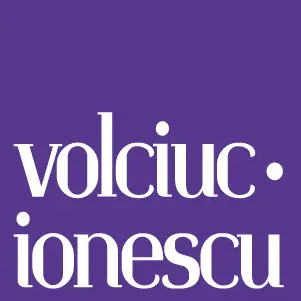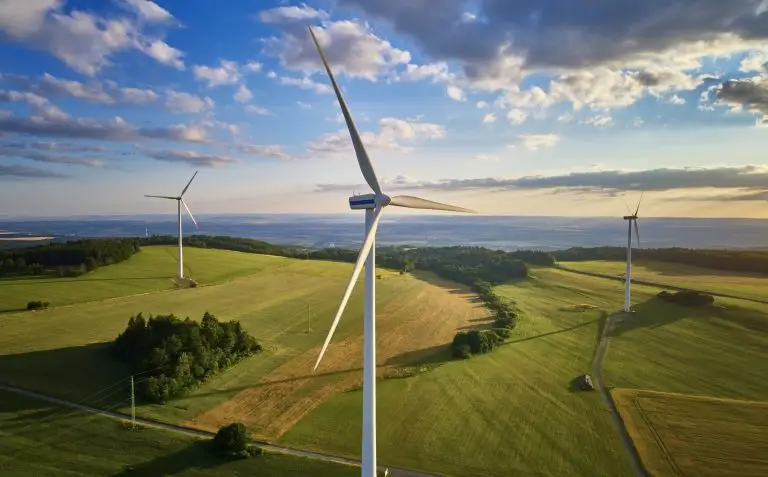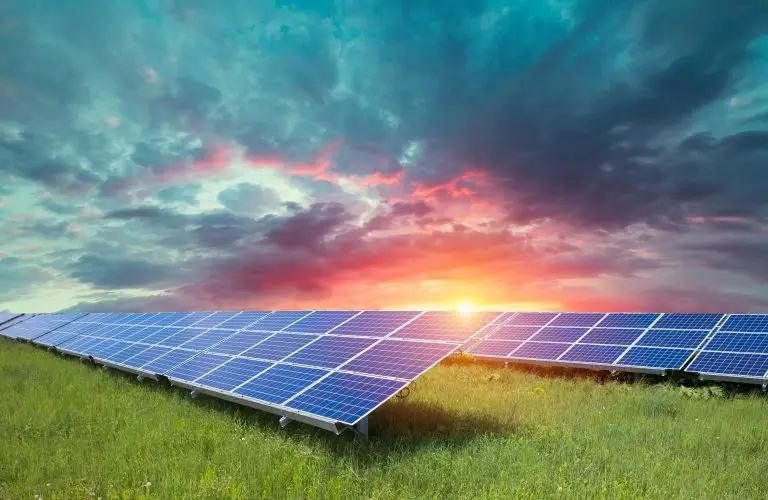Background
The green certificates support scheme in a nutshell
Romania implemented a support system for renewable energy based on green certificates (GCs) granted free of charge to producers of electricity from certain renewable energy sources (hydropower <10 MW, wind, solar, biomass, landfill gas and sewage treatment plants), and an obligation imposed on electricity suppliers to acquire a certain number of GCs.
The renewable energy support scheme closed on 31 December 2016. Beneficiaries that received accreditation as eligible producer of electricity from renewable energy sources by the Energy Regulatory Agency of Romania (ANRE) until 31 December 2016, receive a certain number of GCs, depending on technology, for each MWh of electricity produced from renewable energy sources and sold, for a period of 15 years (in case of new installations) as of the date of their accreditation.
The number of GCs that the suppliers need to acquire is calculated based on mandatory annual quotas determined in accordance with the law and the electricity supplied to end consumers. Electricity suppliers that fail to buy the required number of GCs in a year are sanctioned with a penalty equal to double the maximum price for GCs set by the law for each missing GC.
GCs are currently traded on the GCs centralised market, independently of the electricity for which they were granted, at prices determined by competitive mechanisms, ranging between the maximum and minimum levels set by the Renewable Energy Law no. 220/2008 (EUR 55 and EUR 27 respectively, annually indexed). Electricity is sold on the electricity centralised market at the market price. There is no buyer of last resort, and, in case the mandatory quota for a year is set to a value that leads to an obligation of the suppliers to buy less GCs that the total number of GCs issued in a year, the difference of GCs remains unsold.
The cost related to the acquisition of GCs by electricity suppliers is ultimately borne by the final consumers, being included in their electricity bill (except for some energy-intensive industrials benefiting from a partial exemption).
Developments in the support scheme in recent years
When putting in place the support scheme, the Romanian authorities did not anticipate the level of investments that would be attracted and the impact on the electricity prices. Few years into the application of the scheme, consumers, in particular those from energy-intensive industries, complained that the increasing electricity prices severely affect their competitiveness on the global market. Authorities also feared that households would not be able to afford the uncontrolled raise on a short term of the electricity bill due to the contribution paid for the support of the renewable energy. On this background, the Renewable Energy Law no. 220/2008 suffered various amendments aimed at reducing the level of support, the most adverse being:
- Initially, the annual mandatory GCs acquisition quotas were set out in the Renewable Energy Law no. 220/2008 (gradually increasing each year, from 8.3% in 2010 to 20% in 2020). Starting with 2014, the quotas for the period 2014 – 2020 were abrogated and replaced by a mechanism under which ANRE would determine each year the quota based on own estimations of the quantity of electricity that would benefit from the support system and the final electricity consumption.
- Temporary postponement from trading of a number of GCs received by those beneficiaries accredited by ANRE before 31 December 2013: one certificate out of two in case of wind, one certificate out of three for new micro-hydro, two certificates out of six in case of solar. The “postponed” GCs for solar and new hydro could not be traded during the period 1 July 2013-31 March 2017, and for wind during the period 1 July 2013-31 December 2017;
- GC’s validity was reduced from 16 months to 12 months;
- Beneficiaries were no longer entitled to receive GCs for the electricity delivered to the grid in excess to the quantity included in the hourly physical notifications sent to the Transmission System Operator.
The GCs annual acquisition quotas were calculated by ANRE at levels significantly lower than the ones initially provided in legislation and taken into account by investors – for example, the initial quota for 2016 set in the law was 17%, while ANRE established a quota of 12.15%. Even more, although in 2017 a part of the postponed GCs would have been allowed at trading, flooding the market with GCs, ANRE slashed the quota at 8.3%, the effect being that a substantial portion of the GCs issued would remain unsold and expire. Without the revenues from GCs trading, it is very difficult for renewable energy producers to survive.
Amendments brought by the Emergency Governance Ordinance No. 24/2017
Purpose of the amendments
The producers of electricity from renewable energy sources approached the relevant authorities and the government expressing their concerns that the various legislative changes to the support scheme affect their financial viability and could even lead to the bankruptcy of several producers.
Recognizing the stringent need to reform the legislation to avoid the collapse of the renewable energy sector, while still maintaining a balance between the level of affordability of the consumers and the financial effort of the producers in keeping their renewable energy production facilities operational, last year the Ministry of Energy held discussions with the private sector (both producers and consumers) and relevant industry associations and ordered an independent study of the impact of several scenarios of amendments to the support scheme both on the customers and the producers. The outcome is reflected in the Emergency Governance Ordinance No. 24/2017 (EGO 24/2017) amending the Renewable Energy Law No. 220/2008. The amendments were approved by the EU Commission in December 2016.
The key amendments are summarized below:
Calculation of mandatory GCs Quota
From 31 March 2017 onwards, the method for calculation of the GCs acquisition quota is revised – the quota will be based on (i) a so-called “fixed annual quantity of GCs” (calculated as the total quantity of GCs estimated to be issued until closing of the support scheme in 2031 (including the GCs postponed to trading during 2013-2024) divided to the number of years remaining from the support period) and (ii) the final electricity consumption, without exceeding an average impact of EUR 11.1/MWh in the invoice of final consumer. This method is aimed at achieving a more uniform distribution of the impact of the GCs on the consumer’s final bill throughout the entire duration of the support scheme.
Starting with 2018, the fixed annual quantity of GCs will be calculated by ANRE every two years by June 30th of the relevant year and approved by government decision within 60 days from receipt of the ANRE calculation. The fixed annual quantity of GCs for 2017-2018 is 14,910,140.
Each year, in December, ANRE will calculate the estimated GCs acquisition quota for the following year, based on the fixed annual quantity of GCs and the estimated final electricity consumption for that year. The final GCs acquisition quota will be determined by March 1st each year for the preceding year, without exceeding an average impact of EUR 11.1/MWh in the invoice of final consumer, taking into account the weighted average GCs price in transactions on the anonymous centralized GCs market of the previous year. The Lei value is calculated based on the average exchange rate of the National Bank of Romania for the previous year.
ANRE has the obligation to calculate and approve the estimated GCs acquisition quota for the remaining period of year 2017 by 30 April 2017
For 2017, the final GCs acquisition quota will be determined taking into account the previous calculation method for the period up to March 31st, and the new calculation method for the period 1 April – 31 December 2017.
According to ANRE Order No. 27/2017, the estimated GCs acquisition quota for the period 1 April – 31 December 2017 is established at 0.358 GCs / MWh. As a comparison, the final GCs acquisition quota approved by ANRE for 2016 was 0.306 GCs / MWh.
GCs validity extended
The GCs issued by the Transmission System Operator starting with 1 April 2017 and the GCs postponed to trading from 1 July 2013 will be valid and may be traded until 31 March 2032. Those GCs issued prior to 1 April 2017 (other than those postponed) will expire in 12 months from their issuance date.
New minimum and maximum GCs prices
The permitted GCs trading limits are amended for the period 31 March 2017 to 31 March 2032, as follows:
- the new minimum trading value is EUR 29.4 per GC (comparable to the last indexed minimum value of EUR 29.45);
- the new maximum trading value is EUR 35 per GC ((significantly lower than the previous maximum value, as indexed, of EUR 60).
In addition, these values will no longer be indexed. The decrease of the maximum trading value of a GC and elimination of indexation seek to limit the impact of the GCs on the final electricity price paid by consumers. In any event, given that demand for GCs was substantially lower than the offer, the trading prices were at the minimum trading value set by the law in the last years.
The penalty payable by the suppliers failing to fulfil the annual mandatory quota is still equal to double the maximum trading value of a GC, thus being reduced from EUR 110 to EUR 70 for each non-purchased GC.
Prolongation of the period of postponement and of the period of recovery of postponed GCs
The recovery period for GCs postponed for wind and micro-hydro power plants is extended to 8 years (compared to 3 years as previously foreseen), from 1 January 2018 until 31 December 2025. The postponed GCs will be recovered in equal monthly instalments.
The postponement period for solar power plants is extended until 31 December 2024 (as compared to 31 March 2017 as previously foreseen). The recovery will take place in equal monthly instalments from 1 January 2025 until 31 December 2030 (as compared to 1 January 2018 – 30 December 2020 as previously foreseen).
Given the increased validity of GCs and the extension of the recovery of postponed GCs, producers will be allowed to obtain the postponed GCs and to trade GCs also after expiry of their accreditation.
GCs bookkeeping
The EGO 24/2017 clarifies that the GCs are not financial instruments and, for bookkeeping purposes, the GCs issued after 31 March 2017 will be allocated a value only upon their trading (not from the moment they are received, as it was the case until now). The GCs issued until 31 March 2017 will continue to fall under the previous regime set out by the Ministry of Public Finances Order No. 1802/2014.
This amendment eliminates the inconveniences created by the fact that, until now, producers had to register GCs as revenues, and be taxed accordingly, upon their issuance, although the GCs would be sold at a later stage or not sold at all and expire.
New restrictions regarding GCs trading
GCs bilateral contracts which will be concluded on the centralized GCs market starting with 31 March 2017 may have a maximum validity until 31 August 2017 only.
New trading platforms should be implemented by 1 September 2017:
- the centralised anonymous GCs market – centralised platforms for GCs trading (spot and forward transactions) organised by OPCOM, allowing participants to the GCs market to submit firm GCs sale or purchase offers with respect to quantity and price, without revealing their identity to the other participants to the trading session; the forward transactions will be concluded based on a standard form agreement;
- the centralised market for electricity from renewable sources benefiting from the GCs support scheme – centralised and anonymous market, where electricity produced from renewable sources and the corresponding GCs are traded together, as a package, in a competitive, transparent, public, centralised and non-discriminatory manner. The electricity price will be determined competitively by the market mechanisms, while the price of the GCs associated to the sold quantity of electricity will be equal to the closing price for the last trading session on the centralised anonymous GCs market. This new platform will enable producers to sell their GCs by offering competitive prices for the electricity, thus making the electricity and GCs package attractive for suppliers.
From 1 September 2017, the trading of GCs is permitted only in a transparent, centralized and non-discriminatory manner, on the centralised anonymous GCs market and the centralized market for electricity from renewable sources benefiting from the GCs support scheme.
The existing bilateral contracts cannot be prolonged or amended to increase the sold GCs quantity and the conclusion of new bilateral contracts is prohibited.
A GC may be subject to only one transaction between a producer as seller and a supplier as buyer, except for the case when a producer bound by a GCs sale and purchase contract is not in a position to fulfil its sale obligations under such contract and has to purchase additional GCs to cover the difference.
These measures are intended to limit speculations and eliminate any arrangements between market participants outside the centralised market.
Sanctions
Harsh fines ranging between 1% and 5% of the turnover achieved in the previous year are introduced to deter breach of the obligation to trade GCs on the centralised GCs markets only.
Final remarks – impact of changes
Given that EGO 24/2017 reflects a compromise between the interests of the producers and those of the consumers, it does not completely satisfy all sides.
Certain changes brought by EGO 24/2017 are largely welcome by the renewable energy sector, in particular the extension of the validity of GCs, the new method for calculation of the mandatory GCs acquisition quota, the new bookkeeping of GCs, and the new GCs trading platforms.
The introduction of the concept of fixed annual quantity of GCs for the calculation of the annual GCs acquisition quota should ensure an increased capacity of the market to absorb GCs, but also a more uniform distribution of the impact on the electricity bill of the final consumers until 2032.
Producers of electricity from solar sources are not happy with the long extension of the GCs postponement and recovery periods (measure which was explained by the government in view of the higher IRR achieved by solar power projects compared to other renewable energy technologies and the need to avoid a substantial excess of GCs on the market in the next 3 years).
Some producers fear that a large quantity of GCs is already contracted under ongoing long-term bilateral contracts, which will continue to be valid until their expiry, leaving less room for their own GCs to be sold. They also worry that the introduction of the new GCs trading platforms might not be efficient to completely exclude various forms of arrangements outside the market. It is obvious that there were various limitations to what the new legislation could bring forward in this respect – grandfathering rules had to be observed, previous contractual arrangements could not and should not be affected, and the regime of GCs issued prior to entry into force of the EGO 24/2017 remained unchanged.
On the other hand, certain large industrial consumers expressed concerns that, during the seven years’ gap between the expiry date of the aid scheme for energy intensive users (i.e. 2024) and the end of the support period for the green certificate scheme, they will be severely affected by the increased electricity prices.
All in all, the amendments brought by EGO 24/2017 will solve some of the challenges affecting the renewable energy producers and do bring some “fresh air” to the sector. Producers feel “the amendments do not change the fundamental parameters of the support scheme in general, they reduce slightly the level of support for the beneficiaries, but they will bring stability, transparency and sustainability of the scheme for the long term”. As for consumers, capping the impact on the electricity bill to EUR 11.1 should provide predictability with respect to their contribution for the renewables support scheme and limit their financial effort.
While it is unlikely to see new renewables projects over the next years in Romania (other than possibly under the newly envisaged support scheme for energy from biomass, biogas and geothermal energy, when approved), we expect that a secondary market will kick-off and develop significantly in the upcoming period – lots of good assets are looking for new owners.
This article was also published on Lexology.




